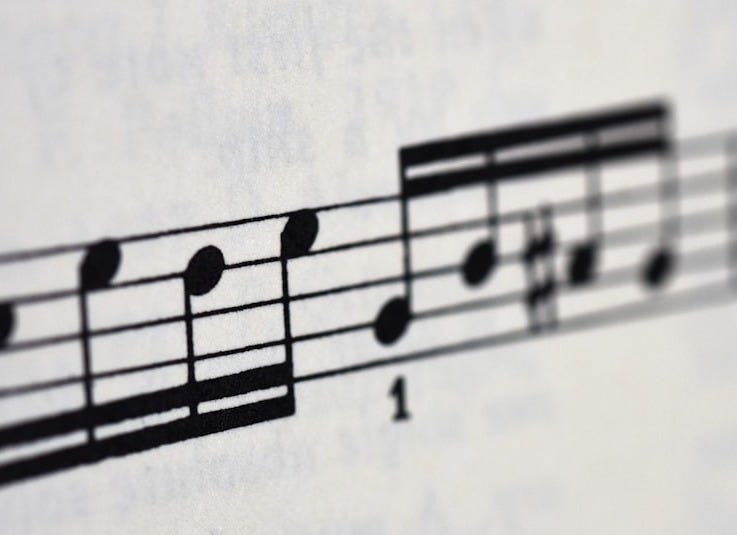Early this morning over coffee I selected some mosaic motifs for my upcoming February throw. Afterwards I hopped on the treadmill for ten minutes (I know, I know - but it’s better than nothing, and it got my brain going), and then, fueled by cardio and caffeine, I decided to do a little dive into the concept of the mosaic.
Slipped stitch knitting is a colorwork technique in which only one color is worked every two rows. Unlike stranded knitting, the knitter holds only one color at any given time. It’s easy, once learned, and the results can be quite spectacular. The technique was popularized by Barbara G. Walker, who renamed it Mosaic Knitting and took the body of work to new levels.
I had a few false starts in my search for information on the term ‘mosaic;’ at first I could find only the definitions we all probably learned in art class: images made from bits of material like stone. This is true, but it’s such a flat reference to a beautiful item.
Mosaic also describes a medical condition in which a person carries two sets of genes (paraphrasing very roughly), and it’s a term used for laws handed down to/by Moses.
Then I found this, from
- and how cool to find him on Substack! You can read the LinkedIn article I’m referencing here. Haren talks about “intense concentration;” I think this is my definition of a flow state as part of the creative process, and definitely something I experience when writing and knitting.The concept of intense concentration is a very seductive rabbit hole, but maybe something to explore on another day. What I really want to talk about is Mr. Haren’s explanation of one origin of the word “mosaic,” which is supported in Wiktionary as well:
The word “mosaic” comes from the Medieval Latin word “musaicum” meaning "work of the Muse.”
What other word looks like musaicum? That’s right - music. Keeping in mind that I’m not a scholar, just a listener and watcher, here’s how I can affirm that connection.
Anyone who took music lessons of any kind knows what a time signature is - it’s the number of beats in a measure and the quality of those beats. Within that time signature, rhythm happens, and it’s something we feel in our bones. Remember piano lessons? ONE two three four ONE two three four. Within that time signature there is freedom to create complicated music that goes far beyond ONE two three four - but it starts there.
Now, consider mosaic knitting. The number of stitches in the repeat is the time signature, and the visual effect of some mosaic patterns and finished objects can actually look like notes on a staff.

A slipped stitch is a stitch that is not knitted or purled. It just rests - like a rest (or an absence of sound) in music. I count (sometimes out loud) when I work a series of slipped and worked stitches: slip ONE slip TWO slip THREE. Most of the time, just as with a rest in music, I am silent as I slip and count as I knit, but I do hold a rhythm when I execute a sequence like this.
Within the rules of mosaic knitting there is also freedom to create.
In the context of knitting, I struggle to call myself a creator; I don’t design the patterns I knit (or I haven’t yet), and every time someone compliments me on a finished mosaic work (the results are admittedly remarkable to see), I automatically respond with ‘thanks, but it’s actually not a big deal; it’s just slipping stitches and super easy.’
I’m not taking into account other aspects of my role in the creative process; the motif is a jumping-off point for which I am forever grateful - thank the yarn gods for designers with good spatial relations and a spark of inspiration! - but the color selection, gauge, weight, and juxtaposition of motifs are almost always uniquely mine.
This is true of music also. It’s a huge understatement to say that a multitude of arrangements exists for so many original works. Each of those arrangers is also a creator, and each performer creates their own take on the notes as they express themselves with piano keys, drums, guitars, violin, bassoon.
So many creations. So many creators.
And now the caffeine buzz is wearing off and my epiphany is losing a bit of its glow. I suppose that’s why it’s good to capture these insights when they’re at their brightest.
I’ll close with gratitude for the connections I found today. If I hadn’t stepped out on that path of discovery, I wouldn’t have found the insights that awaited me. Meanwhile I’m going to start replying with a simple “thank you” when complemented on my work - maybe with an offer to teach the speaker how to knit mosaic colorwork.
Or maybe I’ll call it Musical Knitting.





I love your connection of the rhythm of mosaic knitting to music! I, too, keep the beat in my head when working mosaic patterns (also when working stranded color work patterns).